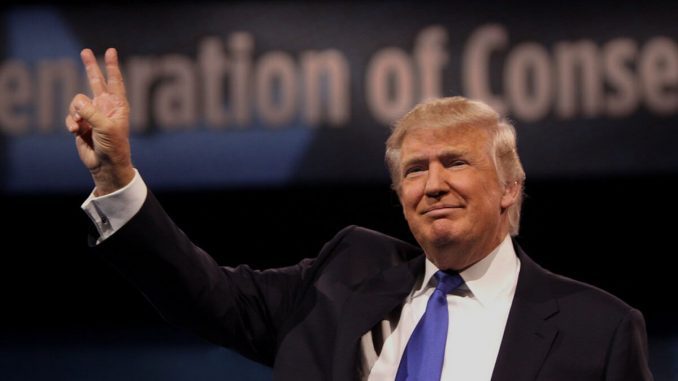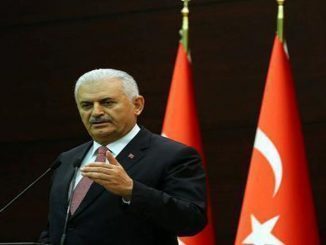
A new Pentagon plan as a part of Trump’s new strategy for the coming assault on Raqqa, the Islamic State capital in Syria, may witness new alliances and a significant U.S. military participation for the first time since the Syrian crisis started.
Since the first days of hi elections campaign, President Trump has said that his top priority is fighting ISIS and ending its presence in the country rather than interfering in the war between Assad regime and his rebels’ opposers.
President Trump, who campaigned on a pledge to expand the fight against the militants in Syria, Iraq and beyond, received the plan Monday after giving the Pentagon 30 days to prepare it.
The new plan may be including increased Special Operations forces, attack helicopters and artillery, and arms supplies to the main Syrian Kurdish and Arab fighting force on the ground, according to U.S. officials and the Washington post.
The military’s favored option among several variations currently under White House review, the proposal would ease a number of restrictions on U.S. activities imposed during the Obama administration.
Officials involved in the planning have proposed lifting a cap on the size of the U.S. military contingent in Syria, currently numbering about 500 Special Operations trainers and advisers to the combined Syrian Democratic Forces, or SDF. While the Americans would not be directly involved in ground combat, the proposal would allow them to work closer to the front line and would delegate more decision-making authority down the military line from Washington.
Tension with Turkey
But in a conflict where nothing has been as simple as anticipated, the Raqqa offensive has already sparked new alliances. In just the past two days, U.S. forces intended for the Raqqa battle have had to detour to a town in northern Syria to head off a confrontation between two American allied forces — Turkish and Syrian Kurdish fighters. There, they have found themselves effectively side by side with Russian and Syrian government forces with the same apparent objective.
Air strikes carried out by the US-led coalition and a long fight by the SDF forces ended in recapturing Manbij from the control of the Islamic State (ISIS) group last year, in addition to controlling large swathes of land in northern Syria.
The SDF, backed by US coalition, launched also a campaign with the ultimate aim of capturing Raqqa in November and succeeded in encircling the city. Recently, they launched an assault on Deir Ezzor province to cut the road to Raqqa and surrounding ISIS effectively.
Approval of the Raqqa plan would effectively shut the door on Turkey’s demands that Syrian Kurds, considered terrorists by Ankara, be denied U.S. equipment and kept out of the upcoming offensive. Turkish President Recep Tayyip Erdogan has said that arming and including the Kurdish People’s Protection Units, or YPG, in the operation is unacceptable and has vowed to move his own troops and Turkish-allied Syrian rebel forces toward Raqqa.
U.S. officials, some of whom spoke on the condition of anonymity about the still-secret planning, believe Erdogan’s tough talk is motivated primarily by domestic politics.
Turkey sees the YPG as an extension of Kurdish PKK militants who have waged a three-decade insurgency in southeastern Turkey and started its own military operations to end both ISIS and Kurdish “threat” near its borders.
Erdogan said he wants to set up a safe zone near the Turkish border and clear the terrorism threat, which includes Kurdish forces as well as ISIS, from the area.
Therefore, Turkey sought to cast the YPG out of Manbij and to be the efficient part in Raqqa battle, and Turkish president has spoken about these matters with the US president Donald Trump recently
Alliance with Russia
In addition, the United States and Russia have managed to avoid confrontation in Syria’s separate civil war, where they are on opposing sides. Trump has said repeatedly that the two powers should cooperate against the Islamic State, and he has indicated that the future of Russia-backed Assad is of less concern to him.
The Pentagon disapproves of possible U.S.-Russia cooperation, although U.S. officials are not unhappy at the buffer Russia and Syria now appear to be creating between Turkey and the Kurds, or the prospect of the Syrian government moving into Manbij. A positive result, officials said, would not only prevent Turkish forces and their Syrian rebel allies from moving into the town, but it would also potentially push any remaining YPG forces to the eastern side of the Euphrates.
While Turkey has supported rebel forces fighting against Assad, it has never come into direct conflict with the Syrian military, and U.S. officials believe it would far rather have the Syrian government in charge of Manbij than the Kurds. There are hopes that Moscow, which has been simultaneously working to improve relations with Turkey, can help persuade Erdogan to back off.
What the Americans manifestly do not want to see happen is the creation of a new military front and potential conflagration around Manbij that would drain both attention and resources away from plans for Raqqa. With the city believed to be the center of Islamic State planning for overseas attacks, the offensive is seen as urgent and has already been delayed from original plans to begin in February.
In his final days in office, former president Barack Obama approved plans to send two or three Apache attack helicopters to the Syrian theater but deferred approval of arming the Kurds as part of the SDF. Rather than moving immediately on the plan already in place, Trump at the end of January ordered the Pentagon to draw up new options by the end of February.
Changing Obama’s legacy
With the only real alternative being to use U.S. ground troops against Raqqa, Defense Secretary Jim Mattis has stuck with the basic outline of the plan drawn up under Obama, officials said. The combined Syrian Arab-Kurdish force, now numbering more than 50,000, has moved steadily to within less than six miles of the outskirts of Raqqa in an isolation phase that is expected to be completed in the coming weeks.
Even if Turkey does direct its forces south toward Raqqa, the hope is that the difficult terrain they would have to travel would prevent them from reaching there until after the offensive is well underway.
Rather than a wholesale revision, the new proposal calls for increased U.S. participation, with more personnel and equipment and less-restrictive rules. As they have in support of the Iraqi military in Mosul, U.S. fixed-wing aircraft and attack helicopters would actively back the ground force. U.S. owned and operated artillery would be moved into Syria to pound the militants from afar, while more Special Operations troops would move closer to the front lines — requiring more U.S. military assets to protect them.
The SDF — both Kurds and Arabs — would be supplied with weaponry along with vehicles and equipment to travel through and disarm what are expected to be extensive minefields and other improvised explosive devices along the way.
Trump’s executive order also directed the Pentagon to recommend changes to Obama administration restrictions on military rules of engagement that went beyond those required by international law. Principal among them is an Obama executive order, signed last summer, imposing strict rules to avoid civilian casualties. It is not known whether the new military proposal would lift those restrictions.



